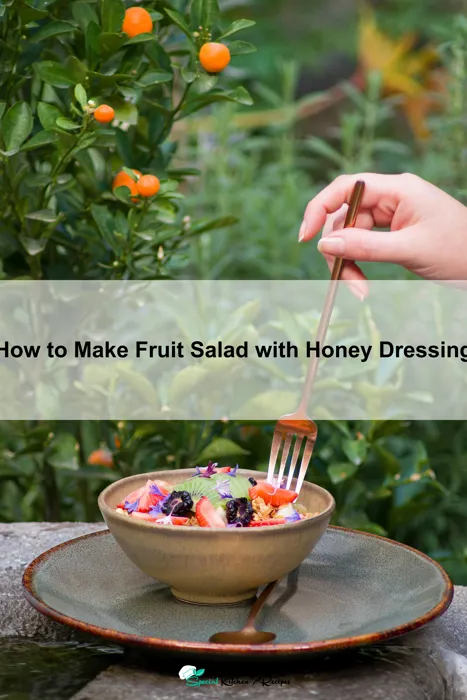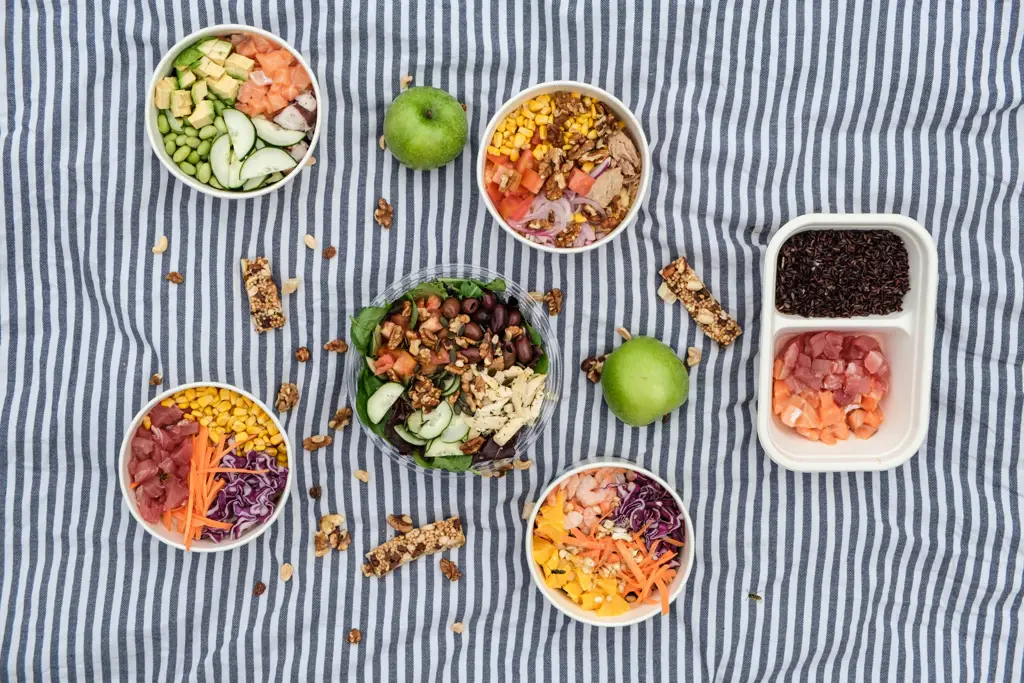Fruit salad, a vibrant and refreshing concoction of nature’s sweetest offerings, boasts a history as rich and diverse as the fruits themselves. While pinpointing its exact origin is difficult, the concept of combining various fruits for a palatable mix dates back centuries. Ancient civilizations, from the Greeks and Romans who enjoyed simple combinations of seasonal fruits to the elaborate fruit arrangements served in medieval European courts, all contributed to the evolution of this beloved dish. The specific combinations and preparation methods varied widely depending on geographical location and available ingredients, demonstrating the inherently adaptable nature of fruit salad.
The modern iteration of fruit salad, characterized by its colorful presentation and often accompanied by a light dressing, gained popularity in the 20th century, coinciding with the rise of readily available refrigeration and global trade. This allowed for a wider variety of fruits to be incorporated year-round, leading to the countless variations we see today. Interestingly, according to a recent survey by the National Fruit Association, fruit salad is the second most popular dessert in the United States, surpassed only by chocolate cake, highlighting its consistent appeal across diverse demographics. The simple act of combining fruits is a testament to human ingenuity and our enduring love for fresh, natural flavors.
Fruit salad holds significant cultural importance across the globe. In many cultures, it is a staple at celebrations, feasts, and even everyday meals. For example, in many parts of Southeast Asia, fruit salad is often served as a refreshing palate cleanser between spicier dishes, reflecting a deep understanding of culinary balance. In Western cultures, it’s frequently associated with summer barbecues and picnics, symbolizing warmth, togetherness, and the abundance of the harvest. The simple act of preparing and sharing fruit salad can be a powerful symbol of hospitality and community, further underscoring its cultural significance beyond its simple deliciousness. This recipe for fruit salad with a honey dressing offers a delicious and accessible way to experience this timeless classic, showcasing the versatility and enduring charm of this beloved dish.
Ingredients and Measurements
This recipe yields a vibrant and refreshing fruit salad perfect for 4-6 servings. The beauty of a fruit salad lies in its flexibility, so feel free to adjust quantities based on your preferences and the availability of your favorite fruits. However, maintaining a balance of textures and flavors is key for an optimal outcome.
For the fruit component, we’ll aim for a variety of colors, textures, and sweetness levels. Here’s a suggested list:
- 2 cups Strawberries: Choose ripe, firm strawberries. Wash thoroughly and hull them before slicing or dicing. Smaller berries can be halved, while larger ones can be quartered or sliced.
- 1 ½ cups Grapes (Red and Green): A mix of red and green grapes adds visual appeal and a slight contrast in sweetness. Wash thoroughly and cut larger grapes in half.
- 1 cup Kiwi: Peel and slice the kiwi into thin rounds or half-moons. Avoid over-ripening kiwis, as they can become mushy.
- 1 Orange: Peel the orange and segment it, removing all the pith (the white membrane) for a cleaner taste. You can also juice the orange and add the juice to the dressing for extra citrusy flavor.
- 1 cup Pineapple Chunks (fresh or canned): If using canned pineapple, ensure it’s packed in juice, not syrup, to control the sugar content. Drain well before adding to the salad.
- ½ cup Blueberries: Blueberries add a burst of antioxidants and a beautiful deep blue color. Gentle rinsing is sufficient; avoid over-washing, which can damage the delicate berries.
For the Honey-Lime Dressing:
- ¼ cup Honey: Use a high-quality honey for the best flavor. The type of honey you use will impact the overall sweetness and subtle flavor notes of the dressing.
- 2 tablespoons Lime Juice: Freshly squeezed lime juice is recommended for the brightest and most vibrant flavor. Avoid using bottled lime juice, as it often contains preservatives and lacks the freshness of freshly squeezed juice.
- 1 tablespoon Water: This helps to thin the dressing and ensures it coats the fruit evenly. You can adjust the amount of water depending on the desired consistency.
Optional additions: Consider adding other fruits like mangoes, cantaloupe, raspberries, or blackberries, based on your preferences and seasonal availability. Remember to adjust quantities accordingly to maintain a balanced fruit salad.
Preparation of Fruits (Washing, Peeling, Chopping)
The success of your fruit salad hinges on the proper preparation of your ingredients. Begin by selecting fresh, ripe fruits. The quality of your fruit directly impacts the flavor and texture of your final salad. For this recipe, we will assume you are using approximately 2 cups of mixed fruit, but you can adjust this quantity to your preference.
Washing is the crucial first step. Thoroughly wash all fruits under cold running water. Scrub the skins gently with your hands or a soft vegetable brush to remove any dirt, pesticides, or wax residue. Pay particular attention to berries, which can harbor bacteria in their crevices. For fruits with thicker skins, like melons, you may want to use a dedicated fruit and vegetable wash to ensure a deeper clean. Rinse thoroughly after washing with any cleaning solution.
Peeling depends on the type of fruit. Some fruits, like apples and pears, require peeling. Use a vegetable peeler to remove the skin efficiently, avoiding removing too much of the edible flesh. For fruits like oranges and mandarins, you’ll typically peel them by hand, segmenting the fruit into individual pieces. Avoid peeling softer fruits like bananas and strawberries, as the skin provides texture and nutrients. However, remove any bruised or damaged areas before chopping.
Chopping is the final step before combining your fruits. The size of your fruit pieces depends on personal preference; however, consistency in size is key for an aesthetically pleasing and evenly mixed salad. Aim for roughly 1/2-inch to 3/4-inch pieces for most fruits. Use a sharp knife for clean, even cuts. Cut harder fruits like apples and pears before softer fruits like berries to prevent the softer fruits from becoming mushy. For berries, simply halve or quarter them as needed, depending on their size. Melons can be cut into cubes or balls using a melon baller for a more elegant presentation. Remember to remove the core and seeds from fruits like apples and melons before chopping.
Important Note: Prepare your fruits just before adding them to the salad to prevent browning and preserve their freshness. If you need to prepare them ahead of time, consider tossing them with a little lemon juice to help prevent enzymatic browning, especially for apples and pears.
Making the Honey Dressing
The honey dressing is the star of this fruit salad, elevating the natural sweetness of the fruit with a delightful tang and subtle complexity. To achieve the perfect balance, precise measurements are key. We’ll be creating a dressing that’s both vibrant and versatile, complementing a wide array of fruits.
Begin by gathering your ingredients: 2 tablespoons of honey (preferably a light-colored honey for a less intense flavor), 1 tablespoon of apple cider vinegar (this provides a lovely acidity that cuts through the sweetness), 1 tablespoon of olive oil (a high-quality extra virgin olive oil will add a nuanced flavor), and a pinch of salt (this enhances the overall taste and balances the sweetness). You can also add a quarter teaspoon of ground cinnamon for a warm, autumnal twist, or a small pinch of freshly ground black pepper for a subtle kick.
In a small bowl, whisk together the honey and apple cider vinegar until the honey is fully dissolved. Don’t rush this step! Thorough whisking ensures a smooth, emulsified dressing without any lingering clumps of honey. You should notice the mixture becoming slightly lighter in color as you whisk.
Next, slowly drizzle in the olive oil while continuing to whisk vigorously. Emulsification is crucial here. Whisking constantly prevents the oil from separating from the honey-vinegar mixture, resulting in a creamy and cohesive dressing. If you find it difficult to emulsify, you can add a teaspoon of water at a time until a smooth consistency is reached. This technique is particularly helpful if your honey is particularly thick.
Finally, stir in the salt (and optional cinnamon or pepper). Taste the dressing and adjust the seasoning as needed. You might want to add a little more honey for extra sweetness, or a touch more vinegar for increased tartness. Remember, taste is subjective, so tailor the dressing to your preference. Once you’re happy with the flavor profile, your honey dressing is ready to be used.
Professional Tip: For a smoother, more refined dressing, strain the mixture through a fine-mesh sieve before adding it to the fruit salad. This will remove any small honey crystals or undissolved particles, resulting in a silky smooth texture.
Store any leftover dressing in an airtight container in the refrigerator for up to 3 days. Note: The dressing may thicken slightly when chilled, so bring it to room temperature before using it again.
Combining Fruits and Dressing
This section details the crucial step of combining your freshly prepared fruits with the honey-lime dressing. The success of your fruit salad hinges on properly incorporating the dressing without over-softening the fruit or leaving some pieces dry. We recommend using a gentle approach to ensure even distribution and maintain the textural integrity of each fruit.
Fruit Selection and Preparation are Key: Before combining, ensure all your fruits are thoroughly washed, dried, and cut into uniformly sized pieces. Consistency in size ensures even coating with the dressing and prevents some fruits from becoming soggy before others. Aim for bite-sized pieces, approximately ½ inch to ¾ inch in size. This applies to both softer fruits like berries and firmer fruits like apples or pears.
Gentle Mixing is Essential: Avoid vigorous tossing, which can bruise the fruit and release excessive juice. Instead, use a large bowl and gently fold the dressing into the fruit using two spoons or a spatula. Start with a smaller quantity of dressing (about 2/3 of the total prepared quantity), and gradually add more until the fruit is evenly coated but not swimming in liquid. Over-dressing can lead to a soggy salad, while under-dressing results in dry, unappealing fruit.
Timing is Important: The best time to add the dressing is immediately before serving. This prevents the fruits from releasing too much moisture and becoming mushy. If you must prepare the salad ahead of time, add only a small amount of dressing initially and reserve the rest. Add the remaining dressing just before serving to maintain optimal freshness and texture. Refrigerate the salad in an airtight container if preparing in advance, but avoid doing so for more than 2-3 hours.
Quantity Guidelines: For a typical fruit salad using approximately 4 cups of mixed fruits (a combination of berries, melon, and firmer fruits), you should aim for approximately ¼ cup to ⅓ cup of honey-lime dressing. Adjust this based on the juiciness of your chosen fruits. If you are using very juicy fruits like watermelon or pineapple, you might need slightly less dressing. Conversely, drier fruits like apples or pears might benefit from a slightly larger quantity.
Professional Tip: Consider adding the dressing in two stages. A light toss with a smaller amount first, followed by a second gentle mix after a few minutes allows the juices to blend and ensures even distribution. This technique helps prevent over-dressing and maintains the vibrant colors and textures of your fruit salad.
Taste and Adjust: Once the dressing is incorporated, taste the salad and adjust the sweetness or tartness as needed. You can add a squeeze of extra lime juice for tanginess or a drizzle of honey for extra sweetness. Remember, the ideal balance is subjective, so tailor it to your personal preference.
Serving Suggestions
Your vibrant fruit salad with honey dressing is best enjoyed fresh, showcasing the peak flavor and texture of the fruits. For optimal enjoyment, we recommend serving it chilled. Prepare the salad at least 30 minutes before serving to allow the flavors to meld and the fruits to cool thoroughly. This prevents the salad from becoming overly watery and ensures a more refreshing experience.
Serving Size: This recipe yields approximately 6 servings, perfect for a small gathering or a few days’ worth of delicious snacks. You can easily double or halve the recipe to suit your needs. For individual servings, consider using small bowls or glasses, layering the fruit attractively for visual appeal.
Garnishes: A sprinkle of fresh mint leaves adds a touch of freshness and visual contrast. A few chopped nuts, such as pecans or walnuts (approximately 1 tablespoon per serving), offer a delightful crunch. A drizzle of additional honey (about ½ teaspoon per serving) can enhance the sweetness, while a squeeze of fresh lime juice (about ¼ teaspoon per serving) provides a zesty counterpoint to the sweetness. Consider using edible flowers, such as pansies or nasturtiums, for a sophisticated and elegant presentation, particularly for special occasions. Avoid over-garnishing, as it can overpower the natural flavors of the fruit.
Accompaniments: This fruit salad pairs beautifully with a variety of accompaniments. Serve it alongside yogurt (plain Greek yogurt is a fantastic option) for a protein-rich and healthy snack or breakfast. It also complements grilled chicken or fish, offering a refreshing counterpoint to savory dishes. For a more substantial meal, serve it with a scoop of vanilla ice cream or sorbet for a delightful dessert. Consider the occasion and your guests’ preferences when choosing accompaniments.
Storage: Leftover fruit salad can be stored in an airtight container in the refrigerator for up to 2 days. However, note that some fruits, like bananas and apples, may brown over time. To minimize browning, you can lightly toss the fruits with a little lemon juice before storing. For best results, consume the salad within 24 hours for optimal flavor and texture.
Presentation: For a visually appealing presentation, arrange the fruit in a large, shallow bowl, allowing the colors and textures to shine. You can also use individual serving dishes for a more elegant presentation. Consider the shape, size, and color of your serving dish to complement the vibrant colors of the fruit salad.
Storage Instructions
Proper storage is crucial for maintaining the freshness and quality of your fruit salad and ensuring it remains safe to eat. The delicate nature of the fruit means that it’s best consumed as soon as possible after preparation, ideally within 24 hours. However, with careful attention to storage, you can extend its lifespan somewhat.
Refrigeration is paramount. Do not leave your fruit salad at room temperature for extended periods, especially during warmer months. Bacteria can multiply rapidly at room temperature, leading to spoilage and potential foodborne illness. Once prepared, immediately transfer the fruit salad to an airtight container. A glass container is ideal, as it prevents reactions with plastic and keeps the fruit visibly fresh.
Container Size Matters. Use a container that is just large enough to hold the fruit salad, minimizing the amount of air inside. Excessive air exposure accelerates oxidation, which causes browning and affects the overall taste and appearance. If you’re making a large batch for a party, consider dividing it into smaller containers for easier storage and portion control.
Quantity and Storage Time: For a fruit salad made with approximately 4 cups of fruit and 2 tablespoons of honey dressing, refrigeration for up to 24 hours is recommended. Beyond this timeframe, some fruits, particularly softer ones like bananas and berries, may begin to over-ripen or become mushy. For larger quantities, reduce the storage time accordingly. A fruit salad with 8 cups of fruit, for example, should ideally be consumed within 12-18 hours.
Avoid Cross-Contamination: Always ensure that your storage container is thoroughly clean before use. Any remnants of previous food can introduce bacteria to your fresh fruit salad. Similarly, if using utensils to serve the salad, ensure they are clean and sanitized to prevent contamination.
Freezing is not recommended for this recipe. Freezing fruit salad will alter the texture of the fruit, making it mushy upon thawing. The honey dressing may also separate and become grainy. This recipe is best enjoyed fresh.
Signs of Spoilage: Discard the fruit salad if you notice any signs of mold, unusual discoloration, or a foul odor. Your sense of smell and sight are your best indicators of freshness. When in doubt, it’s always best to err on the side of caution and throw it away.
Recommendations
For optimal flavor, choose ripe, in-season fruits. Their natural sweetness will reduce the need for extra honey, resulting in a healthier and more vibrant fruit salad. Consider a mix of textures and colors for visual appeal and a more complex taste profile. Experiment with combinations like berries, melon, and citrus fruits, or tropical fruits like mango and pineapple.
Serving suggestions are plentiful! This fruit salad is delightful on its own as a refreshing snack or dessert. However, it also pairs beautifully with yogurt, granola, or ice cream for a heartier treat. You can also serve it as a side dish alongside grilled chicken or fish, adding a sweet and tangy counterpoint to savory meals. Consider adding a sprinkle of chopped nuts or seeds for added crunch and nutritional value.
To maintain freshness, store leftover fruit salad in an airtight container in the refrigerator. It is best consumed within 1-2 days for optimum flavor and texture. The honey dressing will help to prevent browning, but some discoloration may still occur. Avoid storing the fruit salad for extended periods, as this may impact its quality.
Nutritional information (per serving – approximate, based on a 1-cup serving and variable fruit selection): Calorie count will vary greatly depending on the type and quantity of fruit used. A typical serving might range from 150-250 calories. The salad is a good source of vitamin C, fiber, and antioxidants, contributing to overall health and well-being. The exact nutritional breakdown will depend on the specific fruits included. Note that this is an estimate and should not be substituted for professional nutritional advice.
Complementary dishes to consider serving alongside your fruit salad include: a light and savory salad with vinaigrette dressing, a grilled cheese sandwich for a sweet and savory contrast, or a simple cheese and cracker platter for a more elegant presentation. The versatility of this fruit salad makes it a perfect addition to a wide variety of meals and occasions.
Important Note: Adjust the amount of honey in the dressing to your preference. If using very sweet fruits, you may need less honey. Always taste and adjust as needed. Enjoy!





